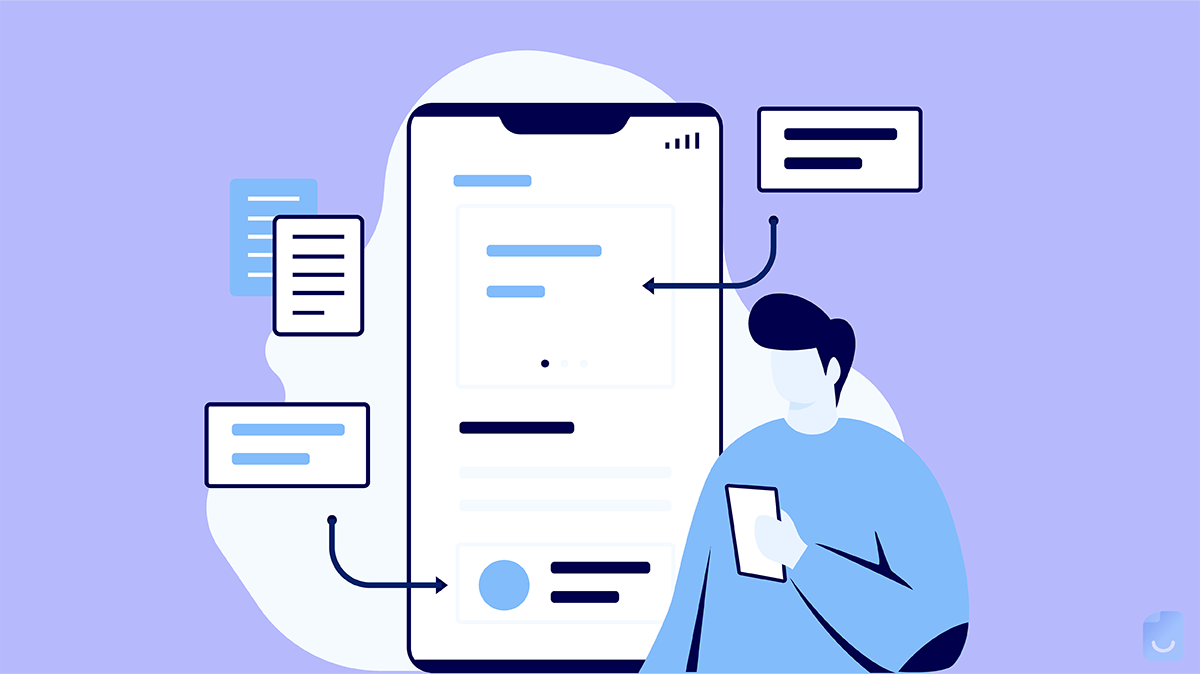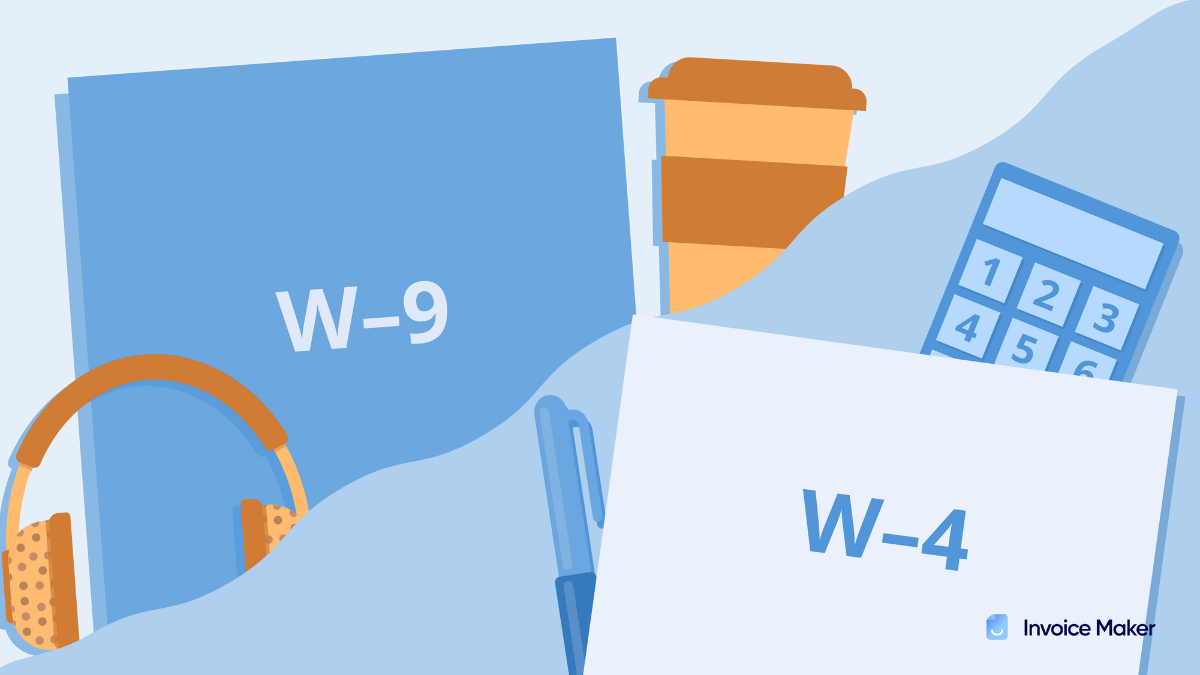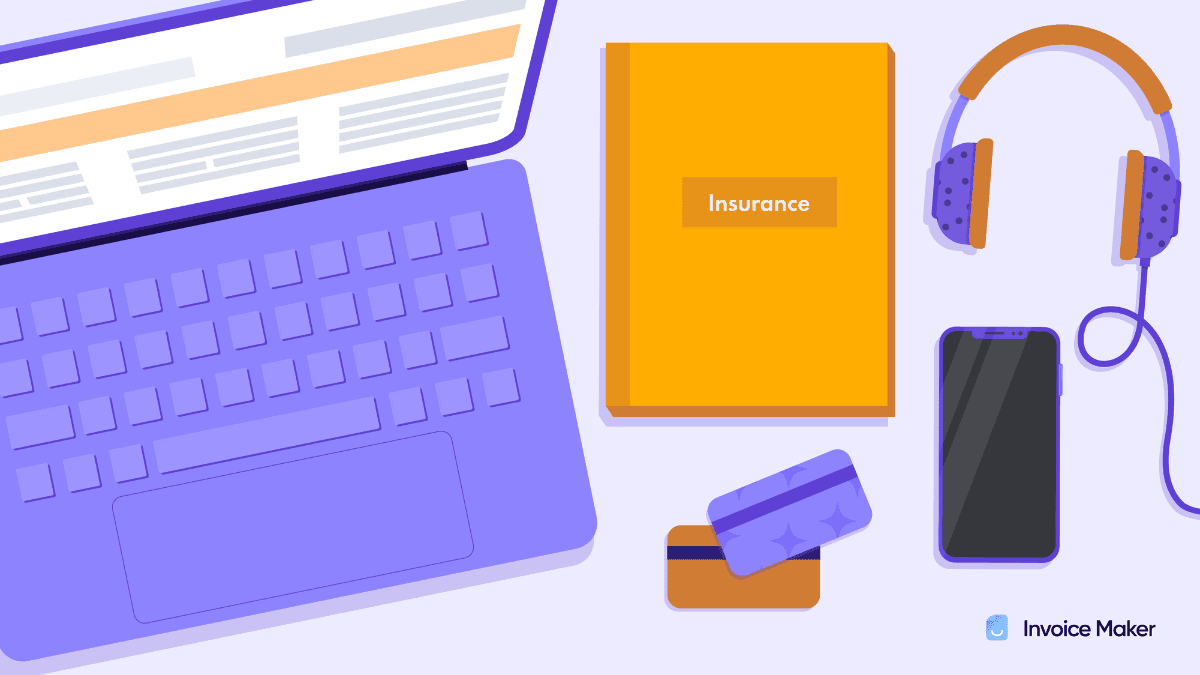Freelance UX Researcher Rates: Proven Tips for Setting Your Price

One of the biggest hurdles you will face when deciding to venture off into the world of freelance work is understanding your worth and what you can charge. Numerous factors need to be considered before landing on a rate that works best for you and your potential customers. Don’t simply pull your rate out of a hat.
Make a Free Invoice NowUX Researcher Average Hourly Rates
Unfortunately, there aren’t any official sources for rates that you should expect for your work as a freelance UX researcher. Salary data can be collected from websites such as Glassdoor and Salary.com, and reflects a wide array of salary possibilities depending on multiple factors. Since these sites rely solely on user salary submissions, their accuracy may be unconfirmed.
Multiple sites list the average hourly rate for a freelance UX researcher as hovering somewhere around $44 per hour. That hourly rate is somewhere in the middle of a low rate of $26 per hour and $74 per hour, depending on experience and skill level.
If you are just starting out as a freelancer, charging by the hour can make more sense because you are likely taking longer to complete projects. As you progress and gain more experience, you will begin to complete tasks more quickly. At this point, it’s a good idea to charge per project so you can be sure you’re earning what you’re worth.
Project-Based UX Researcher Rates
Although charging by the project is the best way to offer value to all parties, it is difficult to determine an average rate. That is because every project is tailored to a specific client and varies based on scope.
With that in mind, a desired hourly rate will take into account the value you bring, your experience, and the hours it will take to complete the task. With this formula, you can likely figure out what the average project-based UX researcher rate is.
Studies show that the average freelance UX research project lasts somewhere between three to six months with 32 to 90 working days. Those figures do not include the hours per day you will spend performing the tasks required to complete the project, so additional factors must be considered.
Industry leaders typically charge customers anywhere from $12,000 to $30,000 for UX research projects depending on the type of research. Here are some other standard industry rates:
- Unmoderated Usability Testing: Typically hovers around $12,000-15,000. Includes the freelance UX researcher sending products to the participants. Can be qualitative or quantitative, depending on the researcher’s chosen method.
- Heuristic Analysis: Commonly billed at around $12,000-15,000. Focuses on the product’s usability. Goal is to discover if the user can interact with a product as designed. This method can come close to the unmoderated usability testing method, which explains the pricing similarities.
- One-on-One Usability Test: Comes with the largest price tag at $22,000-30,000. Freelance UX researcher collaborates with the participant, requiring more research and preparation.
Although these rates are typical in the UX research industry, every freelancer’s rates are different and contingent upon that person’s experience and preferences.
Rates by Experience
As your experience level changes, so will what you should expect to earn as a freelance UX researcher. Considering the majority of the data pertaining to the income a freelance UX researcher earns is aggregated from crowdsourced websites, this can vary considerably from rates being charged on the ground. Rates generally depend on the type of business you’re contracting with as well as the location of the business.
All that aside, here is what you should likely expect as an entry, intermediate, and senior-level UX researcher:
- Entry-Level UX Researcher: The national average yearly income an entry-level UX researcher is expected to make is somewhere between $52,000 per year and $78,000 per year. Entry level covers anywhere from brand new freelance UX researcher to about four years of experience. This level of UX researcher is technically referred to as a junior UX researcher.
- Intermediate-Level UX Researcher: Once you hit your groove and start to know what you are doing, your rates should increase substantially. You are considered an intermediate-level UX researcher after you are operating in the industry for roughly five to 15 years and you should expect to make somewhere between $80,000 per year and $142,000 per year. This position is generally referred to as UX researcher.
- Senior UX Researcher: After 15 years of experience, you should qualify as what is known as a senior UX researcher, or lead UX researcher, and be earning somewhere around the realm of $194,000 per year on average.
Of course, these rates can vary depending on what you offer as a freelancer, but provide a general overview of what you should be able to expect as you pursue your career as a freelance UX researcher.
Factors that May Affect Your Rate
Rates won’t be the same for every project. Multiple factors can either increase or reduce how much you should expect to earn. These factors include:
- Benchmarks: If you are meeting your benchmarks and are performing well, you may or may not have the opportunity to increase your earnings.
- Deliverables: The more or fewer deliverables you offer, the more your rate can vary. Knowing exactly what the customer wants is key to knowing how much to charge.
- Experience: Your experience within the industry indicates the value that you will offer your client. The more experience you have, the greater likelihood that you will be able to charge a higher rate that your clients will find acceptable.
- Timeframe: While the timeframe should largely be dictated by you and your knowledge of what it takes to complete the UX research, your client may have something different in mind. If they’re desiring expedited results, you may be able to substantially increase the rate for the job you are offering.
Other factors may include unforeseen complications, changing the scope while mid-project, and more. Be prepared to be flexible and patient throughout the entire process.
Tips for Setting Your Price
When you first start out as a freelance UX researcher, you will likely price yourself incorrectly. New freelancers tend to over- or underprice their value. Pricing too low will lead to requests from the wrong type of clients and pricing too high will result in not receiving any requests at all.
When setting your freelance UX researcher rates, you’ll want to consider:
- Pricing Model: The first thing to consider when setting your price is how you plan to charge the client. You need to decide whether or not you are going to charge them based on an hourly, weekly, project, or hybrid model. By now you should be aware that charging by the project is the best way to go if you have the experience required to deliver quickly. If you combine a project rate combined with an hourly rate for unexpected additional work or elements you hadn’t considered when drafting the contract, you will receive the best possible compensation.
- Company: In addition, doing some research on the company that you are pitching to will help you understand their budget and needs. This is not to say that you should charge your wealthier clients more simply because they are wealthier, but it does help you in the pitching process. It is much easier to determine a rate when you know a company can afford your services.
- Scope: Understanding the full scope of the project will allow you to assess the time and work required to complete it. Don’t walk into a negotiation with a flat rate in mind. You will end up under or overbidding and may lose a client or secure a contract that you are not getting paid enough to complete. Understand the client’s needs and pain points before creating an offer.
- Value: Sometimes you won’t provide all that much value for your client. Their needs are basic and the service you’re offering is generic at best. These clients shouldn’t be charged the same as a client whose needs check off every box in your offering catalog. The more value you provide, the more you can charge.
- Competitors: You should aim to come close to the prices that competitors in your industry are charging. If their experience and value match yours, charging differently could raise red flags for potential clients.
When you settle on a pricing model and consider the client, scope value, and competitors, settling on a price is the next step.
How to Know if You’re Pricing too Low
Generally speaking, if you are happy with what you are receiving, then you are likely charging at a rate that is appropriate for all parties. However, it is entirely possible that you are grossly undercharging and don’t even know it.
If you are undercharging, you are likely overwhelmed, overbooked, hearing “yes” a lot, charging less than your competitors, or are simply unhappy with the return you are receiving for the work you put in. If any of this is true, it might be time to re-evaluate your freelance UX researcher pricing strategy.
How to Know if You’re Pricing too High
If you are overcharging, it will become pretty evident pretty quickly that your prices are a little high. If you are often hearing “no,” are pricing higher than competitors, or find yourself yearning for a client, you might be charging too much. This often happens when you’re new to freelancing and want to earn based on your ability, but your reputation doesn’t yet match your proposed price. If you are not getting the results you desire, it might be prudent to take a step back and reduce your pricing to achieve the goals you want to achieve.
How to Negotiate with a Client
Even after knowing your value and having a set price, it is often difficult to stick by your rates. Your client wants to save money as much as you want to make money. The negotiation process can be long and frustrating, but if you know what you’re doing, you don’t have to walk away feeling like it could have gone better.
By following a few negotiation best practices, you can make sure you’re being compensated fairly for your freelance UX research project. Consider these best practices before your next meeting with a new client.
Come Prepared
This goes beyond simply dressing to impress or knowing what you offer. If you want to be prepared, you must come with:
- Portfolio: You want to have examples and proof for your client that you are ready and prepared to offer them the services that they want at the quality they desire because you have done it before.
- References: A list of past clients or professional business partners can assist in sealing the deal at the rate you desire.
- Fact Sheets and Data: Providing your potential client with information that might be valuable to them before you even start may make them see your worth and want to meet you a little closer to the rate you’re requesting.
- Research: Researching the company you are meeting with can help you get a better idea of how to customize your offer toward their specific needs. A generic pitch is fine but tailoring your negotiation toward your client generates a positive rapport and nurtures a longer-term relationship.
Always Stay Positive
The negotiation process can be daunting and discouraging. It is easy to lose sight of what you are doing and let negative thoughts creep in. Remember that if you are offering a product that is priced fairly, you are not the problem if you cannot meet your customer’s desired price.
Know Your Worth
Knowing your worth based on your experience and the value that you are bringing your client will help you come up with an accurate starting point. If the client insists on requesting a price point that is well below what you’re offering, they’re not valuing you and it is okay to walk.
Patience is Key
If you are patient throughout the negotiation stages, you might find that someone that seemed difficult or high maintenance at first ends up providing you with a productive, long-lasting freelancer/client relationship.
Have a Goal While Being Flexible
You know what you want the outcome to be before you walk into a negotiation, but so does your client. Have a clear goal that you communicate to your client and be willing to meet them somewhere in the middle. Taking a hard stance in every area will cause you to lose clients and opportunities that might have led to a larger network.
Listen
Not only is listening a polite way to help ensure things go smoothly during your negotiation process, but it also helps avoid misunderstandings. Your client may have wants and needs that go beyond what you offer or might not be as demanding as you expected. This will help you price accordingly.
Use “I” Statements
Sometimes the negotiation process can feel like an argument. Your client may not know the full value of what you are offering and their requests might seem insulting. Remember, they don’t do what you do so they don’t see all the preparation and work that goes into it. Use “I” statements and positive language to convey the importance of your offer. Even if it doesn’t lead to the outcome you desired at that time, they may return to you later.
These negotiation tactics can ensure that you are getting every dollar you deserve for every job you complete.
When to Increase Your Rate
Now that you have set your rates and you’re gaining some traction as a professional in the freelance UX research community, it is time to consider raising them.
There are a few tricks to know when to increase your rates. There are many factors to consider, but for the most part, here is when you should raise your rates:
- Regular Intervals: Many freelancers set their price increases at regular intervals. This allows them to know when they’ll be receiving a “raise” and also allows them to let current clients know when pricing will change so that they can prepare for it. When setting your prices based on regular intervals, be sure to stick to those intervals to avoid causing any confusion for your clients, and be sure to communicate those increases clearly.
- Inflation: As your expenses increase, it will be necessary to raise your prices to offset additional overhead and continue earning a profit. Your clients understand inflation as a reason for a price increase.
- You’re Charging Less than Competitors: A common pricing strategy is to charge less than competitors. Freelancers assume this makes them look more appealing to potential clients. However, this can result in unappealing clients as well as a heavy workload. Undercharging might make clients wonder why you are so cheap and assume it has something to do with the quality of your work or your experience level. It’s important to keep up with your competitors to remain in business.
- You’re Constantly Hearing Yes: While that may sound like a good thing, hearing “yes” too often likely means you’re offering a greater value than you’re charging for. You want your clients to negotiate regularly. This is a sign that your pricing is hovering around where it should be based on your experience and target clientele.
- Fully or Overbooked: If you find yourself constantly fully booked or overbooked, it might be time for you to increase your prices. Being overbooked is a sign that you are offering a greater value to your customers than you may be worth. Although increasing your prices may result in less work, the work that you do have should be with higher-paying and higher quality clients. That should offset the difference in income that you may experience with a smaller workload.
- No Work/Life Balance: Your mental health and well-being are always first, whether or not you are working a 9-5 or for yourself.
- You Want to Make More Money: Wanting to have a bigger paycheck is not an invalid reason to raise your prices. Simply valuing your time and effort is a good enough reason.
Don’t forget that your worth and the value you offer companies will increase the longer that you are in business. The product you’re providing today will likely be significantly more valuable one year from now.
Methods to Increase Yearly Earnings
Aside from assigning a rate for the work involved in the UX research process, there are a few ways to increase your yearly earnings without charging your clients extra or increasing your prices.
- Non-Exclusivity: It is not required for you to focus on one client at a time. This is especially true considering much of your time will be spent waiting for responses from users testing the products or services from the company you’re representing. Fill that downtime with additional clients to maximize revenue.
- Referrals or Outsourcing: If the client has a need that goes beyond the scope of what you offer, you can refer them to a trusted connection or you can outsource the task to those that perform the desired tasks. This will allow you to become a one-stop shop for your client, which offers greater value in the long run.
- Add-Ons: While your base offering is typically all a client may desire, you can offer other related services to increase profitability and create more value for your client. Remember not to nickel and dime clients for products or services they don’t need. Stick to your client’s pain points and needs.
Adding just a few more products or services and expanding your network can help you increase your revenue beyond what you previously thought possible. Remember to prioritize your customers and ensure they are receiving the highest possible quality throughout the entire process.
Do Your Research
As you continue to navigate your freelance UX researcher career, pricing will begin to make a little more sense. You will eventually be able to predict the length of time required to complete particular tasks as well as reasonable deadlines for deliverables. Knowing this information will solidify your understanding of your value and result in being able to set your rates accurately and fairly.
Research is paramount to a proper pricing strategy. Underselling and overselling yourself can spell disaster for your career as a freelance UX researcher. Give your life as a freelance UX researcher a head start by researching what is necessary to implement the pricing strategy that works best for you.


